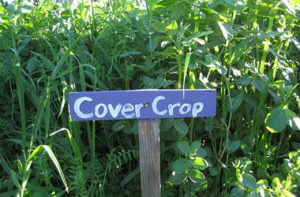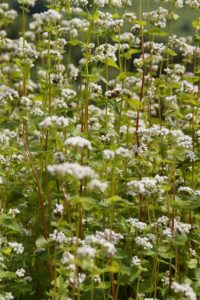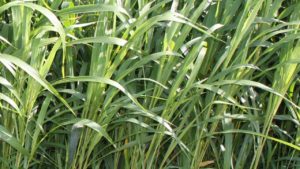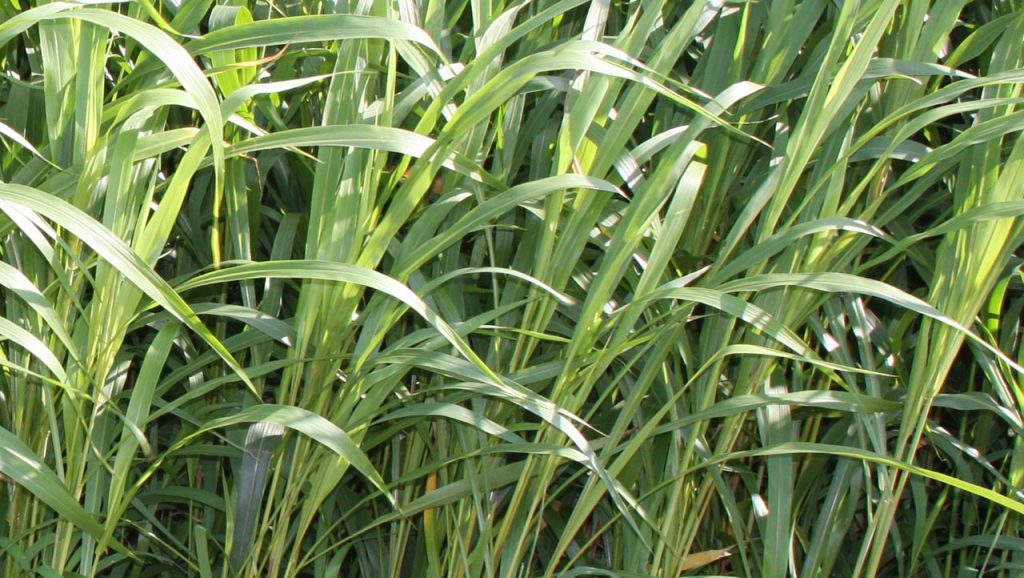 As summer approaches, it’s natural to invest a little more time in the garden. Any good garden maintenance plan involves building soil health because healthy soil grows healthy plants. Planting cover crops in your garden is a great way to rejuvenate your soil. I’ve talked before about planting cover crops in your winter garden, but now I’d like to introduce the idea of planting them in the summer as well.
As summer approaches, it’s natural to invest a little more time in the garden. Any good garden maintenance plan involves building soil health because healthy soil grows healthy plants. Planting cover crops in your garden is a great way to rejuvenate your soil. I’ve talked before about planting cover crops in your winter garden, but now I’d like to introduce the idea of planting them in the summer as well.
Benefits of Growing Cover Crops
- They add organic matter to your soil. Cover crops grow big and tall and can be incorporated right back into your soil – this is why they are often referred to as ‘green manure’.
- Cover crops out-compete weeds. This is key on my farm, where we are unfortunately rich in weed seed in the soil (known as the ‘weed seed bank’). Encourage quickly-geminating cover crop seed instead!
- They fix nitrogen in your soil. Depending on what you use, many cover crops are chosen specifically to take nitrogen in your soil and convert it to a form that is ready and usable by subsequent food crops.
- They add airspace. Cover crop roots are able to penetrate multiple layers of soil.
- They prevent erosion. If you are on a hillside, this is key!
- They break up subsoil. Over time, growing cover crops with deep roots will act to loosen deep hard layers of soil, improving your soil for plants and lessening the need for elbow grease on your part.
Summer Cover Crop Options
- Buckwheat is great and easy go-to summer cover crop. It’s a go-to for many farmers who have a quick opportunity to rest one of their fields by planting a summer cover crop, yet they have another crop that needs to be planted in a timely manner. Buckwheat grows and
 flowers quickly, and you can mow it and till or fork into your soil after just about a month. Going out of town for a month and didn’t plant anything in the garden? It’s a great opportunity to throw down some buckwheat (just ask your neighbor to water it from time to time).
flowers quickly, and you can mow it and till or fork into your soil after just about a month. Going out of town for a month and didn’t plant anything in the garden? It’s a great opportunity to throw down some buckwheat (just ask your neighbor to water it from time to time).
- Sudan Grass is a great alternative to buckwheat if you’re looking for something more substantial that will
 stay in the ground longer. It can easily grow 5 – 10 feet tall, and has waxy leaves that make it fairly drought tolerant. For best results, however, you’ll want to water it from time to time. It has many advantages as a cover crop, namely the sheer amount of biomass it creates, and the ability of its roots to penetrate deep into the soil and break up hard pans.
stay in the ground longer. It can easily grow 5 – 10 feet tall, and has waxy leaves that make it fairly drought tolerant. For best results, however, you’ll want to water it from time to time. It has many advantages as a cover crop, namely the sheer amount of biomass it creates, and the ability of its roots to penetrate deep into the soil and break up hard pans.
Can you fit a summer cover crop into your garden plan for this year? Let us know what you choose!


 Family
Family

